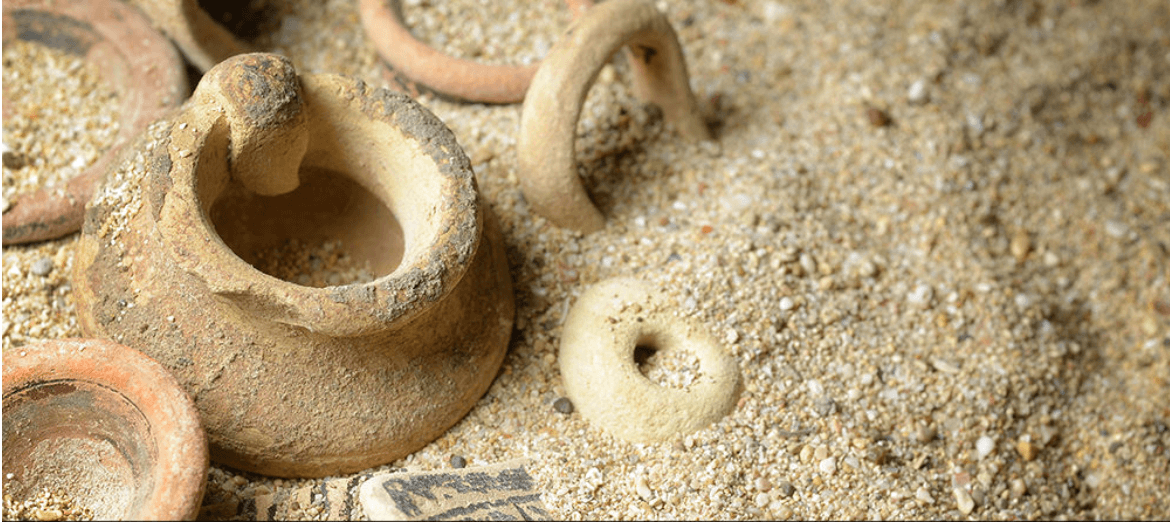
The menorah was an important component of the Tabernacle. It had two purposes: to furnish light and to remind all Israel that God is light. Indeed, from the second Temple through the Greco-Roman period, the menorah became the most frequently used symbol in Judaism.1 Today it is the national emblem of the State of Israel.
Known in Hebrew as ner Elohim (“the lamp of God”), the menorah, like the Tabernacle itself, was an earthly representation of a heavenly reality, shown to Moses by divine revelation (Ex. 25:9, 40) and produced by spiritually gifted craftsmen (35:30–35).
The lamp’s form (37:17–24) may have been taken from a desert plant that was native to the Sinai, but its construction materials came from Egypt as part of the gifts of gold the Israelites received upon their exodus (12:35; 25:3).
Functionally, it lit the interior of the Tabernacle. Symbolically, it reminded the Israelites that God was their true Light. King David declared, “You are my lamp, O LORD; the LORD shall enlighten my darkness” (2 Sam. 22:29).
The menorah’s light symbolizes the Messiah’s purpose: to be “the light of the world” (Jn. 8:12; 9:5). Hebraic scholar John D. Garr wrote,
The menorah is the biblical symbol par excellence. The graceful symmetry of its flowing lines displays a profound beauty that is soothing, reassuring, and uplifting. . . . At the same time, the menorah evokes powerful images of the Divine, assuring its observer that it is far more than an objet d’art. This is a heavenly symbol that transcends the imagination of earthly artisans.2
The menorah is inscribed on such ancient objects as coins and oil lamps and is found carved on reliefs, including one from a priestly house in the Jewish Quarter of Jerusalem dating before the destruction of the second Temple. A menorah also appears on the Roman Emperor Titus’s Arch of Triumph in the Roman Forum in a famous depiction of the spoils taken from the Jewish Temple.
When archaeologists excavated the first-century site of Magdala, they uncovered the oldest Jewish synagogue in the Holy Land. To their surprise and delight, this synagogue, replete with fine mosaic floors, still had a stone-carved Torah-reading stand containing images from the Temple—including a menorah sitting on a decorated pedestal.3
Recently, Israeli archaeologist Eilat Mazar discovered a solid gold medallion bearing the image of a menorah. Mazar is the granddaughter of famed archaeologist Benjamin Mazar who was the first to excavate outside the walls of the Temple Mount after the Six-Day War in 1967. Eilat Mazar also discovered in the Ophel (the area south of the Temple Mount) a beautiful treasure of gold coins.
This remarkable find was apparently part of a collection of items hidden in the seventh century AD by its owners, Jewish people who were possibly expecting to rebuild the Temple under Persian rule. Under the previous rule of the Byzantine Christians, Jewish people had been persecuted. So when the Persians fought the Byzantines, the Jews joined them in hopes of a better life.
Conditions improved and Jewish hopes soared, but then the Muslims attacked Jerusalem and subjugated both Jews and Christians to Islamic rule. The treasured articles likely were abandoned. The medallion, which also depicts a shofar and a Torah, was apparently a decorative piece attached to the cover of a Torah scroll.4
From the Tabernacle to today, the menorah remains a witness to Israel of the role of the Lord of the lamp, the Messiah, who brings the Good News of salvation.
ENDNOTES
- Carol L. Meyers, The Tabernacle Menorah: A Synthetic Study of a Symbol From the Biblical Cult, 2nd ed. (Piscataway, NJ: Gorgias Press, 2003), 17.
- John D. Garr, God’s Lamp, Man’s Light: Mysteries of the Menorah (Atlanta, GA: Golden Key Books/Restoration Foundation, 2001), 9.
- Steven Fine, The Menorah: From the Bible to Modern Israel (Cambridge, MA: Harvard University Press, 2016), 24, 31.
- Eilat Mazar, The Discovery of the Menorah Treasure at the Foot of the Temple Mount (Jerusalem: Shoham—Academic Research and Publication, 2013), 99–100.
